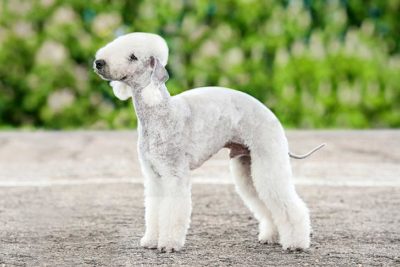Summer comes and you’re worried about your pet overheating and developing heat exhaustion. You may consider shaving your dog’s fur as a way to help him stay cool in warm weather. However, there are some things to keep in mind.
Connect with a verified veterinarian in minutes. Licensed vets are available 24/7 to answer your questions. No need to worry about your furry family member.
What Type of Coat Does Your Dog Have?
Before shaving your pet or having him shaved, be sure to consider the type of coat he has. Dogs with double coats should generally not be shaved. Doubled-coated dogs have two layers of fur, including an undercoat (the fur closest to the skin). The undercoat is typically finer hair that works to keep your dog cool or warm. Shaving could also damage their coat in the long-term (for years to come), as it may not grow back correctly. The coat could become too thin, too short, etc. Some garden hazards for your dog may deteriorate its fur and shaving could be the best way to preserve your pup’s skin.
Double-coated breeds include huskies, German shepherds, golden retrievers, etc.
On the other hand, it’s generally recommended that single-coated dogs be shaved, as their fur generally grows back the same way and won’t be damaged.
Health Issues to Consider Before Shaving Your Dog
Before shaving your canine companion, be sure to consider the type of health issues he has and may face when shaved.
While shaving might sound like a good idea after badly dying your dog’s fur note that dogs with sensitive skin will not do well when shaved. They can suffer from razor burn or hot spots (especially in sensitive areas such as around their genitals, under their tails, in the crooks of their front and bag, legs, etc.). If they have allergies, their skin will be unprotected and more prone to itching and scratching from allergens. Not only this but shaving your beloved pet could also expose him to sunburn and skin cancer.
If your pet has short hair, again, avoid shaving him. They will definitely face an increased risk of skin irritation, allergen exposure, sunburn, hot spots and possibly cancer.

Review symptoms, medications & behavior to keep your pets healthy with a Vet Online in just minutes.
Ask a Vet Live NowShaving Your Dog: Do It Yourself or Hire a Groomer?
Now we’ve taken a look at some of the considerations for shaving your pet, let’s take a look at how to shave your pet.
- Do you have the right equipment? If you plan on shaving your pet at home, do you have the right equipment to safely shave him? Do you have the proper equipment for your dog’s type of fur? Start by finding the right brush if your dog is shedding.
- Do you have experience with clipping or shaving dogs? This is an important consideration when it comes to shaving your dog yourself. If you don’t have experience, you could cause your dog some health issues, including cuts, razor burn or even to develop hot spots. These are generally caused when clippers are used too close the dog’s skin and/or if your pet is moving around as you try to shave him.
- Hire a professional groomer: if you don’t have experience shaving your dog, and you don’t have the right equipment, then it’s best to hire a professional groomer. Professional groomers have the necessary experience and knowledge to deal with different dog breeds, when to shave and more.
Shaving Your Dog, Yourself
If you have the right equipment and experience, then shaving your dog is a good option. You’ll save some money, while keeping your pet at home, where he may not be as fearful or anxious, etc. Here are some things to keep in mind:
1. Buy the Right Equipment: This is the most important part of shaving your dog yourself. Make sure to buy the right equipment for that’s meant for dogs and equipment right for your dog’s type of fur coat. The right clippers can be recommended by your vet and found in pet supply stores. If you’re not sure which clippers to buy, ask your vet or shop assistant at the pet store. They’ll be the most knowledgeable when it comes to dogs and their fur types, etc.
Look for clippers that are quiet, as loud sounds can make some dogs scared or jump.
2. Proper preparation: be sure to give your pup a bath, let him dry completely and then work on any tangles in his fur before shaving him. Tangles, dirt, etc. can become jammed up in the clippers, which could cause your pet a skin injury. Be sure he’s clean before starting to clip his fur.
3. Ask for help: if you have a nervous or jumpy dog, then you may want to ask someone to help keep your dog under control during the shaving process. Some dogs are nervous when they hear the clipper, while others just don’t want to be shaved, period. Having someone help you will keep your pup safe from injury and maybe keep him a little calmer. In addition, you can also use a leash to keep your canine companion safe in one place as you shave him.
4. An inch of hair: if you decide to have your dog groomed or you choose to do it yourself, be sure to leave about an inch of hair for your canine companion. Leaving an inch of fur gives your dog the protection he needs from the sun, while offering some insulation on cooler nights.
5. Shave with the grain: it’s best to shave with the grain of your dog’s fur. This means you’ll need to find the directly in which his hair grows. Find the grain by running your hand over your pet’s hair. When the hair lays flat, you’ll know you’ve found the grain of your dog’s hair. Or if the hair stands up, you’ll know this is against the grain. Be sure to shave with the grain to avoid damaging your fur baby’s hair and skin. In addition, avoid pulling your pup’s hair as you shave—he’ll be most grateful.
6. Begin with hard-to-reach areas: it’s generally best to start shaving in the more delicate and hard-to-reach areas of your dog first. This includes under the tail, stomach, under his legs, neck ears, etc. Be sure to avoid shaving too near your pup’s skin in these areas, as it is quite delicate. You can cut your dog’s skin and/or he could develop an infection or hot spots. Also keep clippers about an inch (or more) from his eyes.
On the other hand, if your dog is particularly jumpy about getting clipped in these areas, you may want to start with his neck and work back to his tail. Then do the other areas of his body, leaving the sensitive areas until last. It just depends on your level of experience and your pup’s preferences and tolerance.
7. Work on the rest of your pup’s body: now you’re ready to start clipping the rest of your dog’s fur. Just remember to go with the grain and not to cut the fur too close to the skin.
In addition, be sure to work slowly so the clippers don’t go too fast. This can leave lines as well as pull your pup’s fur as you clip.
Be sure to keep the clippers cool, too. Hot clippers can burn your dog, damaging his skin—he could then develop a skin infection or even hot spots, which are both unpleasant for your dog. Things you can do to keep the clippers cool:
- Replace the blades with cooler ones
- Use a spray or lubricant to cool the clippers
- Place hot blades on something metal to help them cool down faster
We hope this article gives you the information you need to make an informed decision when it comes to shaving or clipping your dog’s fur. Remember that dogs with two coats are better left unshaved; shaving can damage their coats and actually lead to other health problems. On the other hand, dogs with one coat are safe to shave and will benefit from having shorter fur in the warm months.
If you choose to find a grooming service near your home, find a person with the right credentials and experience to work with your dog and his specific breed. Your pup will appreciate the extra care and consideration you take to keep him cooler in the summer!
Connect with a verified veterinarian in minutes. Licensed vets are available 24/7 to answer your questions. No need to worry about your furry family member.

Julie
Julie is a graduate of the University of North Carolina, Wilmington, where she studied Animal science. Though contrary to the opinion of her parents she was meant to study pharmacy, but she was in love with animals especially cats. Julie currently works in an animal research institute (NGO) in California and loves spending quality time with her little cat. She has the passion for making research about animals, how they survive, their way of life among others and publishes it. Julie is also happily married with two kids.
Review symptoms, medications & behavior to keep your pets healthy with a Vet Online in just minutes.
Ask a Vet Live Now



